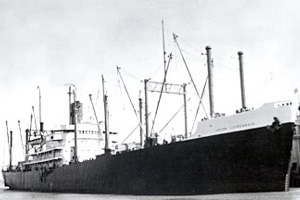- The S.S. Jacob Luckenbach sank in 180 feet of water on July 14, 1953 off the Farallon Islands, 17 miles west-southwest of San Francisco.
- At the time of the accident, the vessel was carrying 457,000 gallons of bunker fuel.
- During two stormy winters (1997-98 and 2001-02), hundreds of oiled seabirds started washing up on beaches from Sonoma to Monterey; the chemical signature of oil from feathers matched that of the Luckenbach.
- Models estimate that during the 1997-98 event, as many as 18,291 birds were killed by the spill, 16% of which were actually found.
On July 14, 1953, a 468-foot freighter, the S.S. Jacob Luckenbach, left San Francisco bound for Korea when it ran into another ship and sank in 180 feet of water near the Farallon Islands (Figure 1). The wreck came to rest 17 miles west-southwest of San Francisco and contained 457,000 gallons of bunker fuel. Bunker fuel is a type of heavy residual fuel left behind when crude oil is processed for gasoline, kerosene, and diesel. The sunken ship leaked oil sporadically for many years, but was not directly linked to a major wildlife disaster until 2002.
In 2002, researchers investigating the Point Reyes Tarball Incident of 1997-98 and the San Mateo Mystery Spill of 2001-02 determined that the chemical signature of oiled feathers matched the oil in the Luckenbach. During the 1997-98 event, almost three thousand birds were found washed up on beaches from Sonoma to Monterey (Figures 1, 2 and 3). Exhaustive models created by researchers at Humboldt State University predicted that six times as many birds actually died during the four month leak from the Luckenbach. Common Murres were the most heavily impacted species (Figure 4); Northern Fulmars, Western Grebes, Surf Scoters, Brandt’s Cormorants, Pacific Loons, Marbled Murrelets, and Brown Pelicans were also recovered from regional beaches.
Evaluations of the Common Murre colony at Drake’s Bay in the Point Reyes area found that, while the population had been increasing at a rate of approximately 11% prior to 1997, the colony decreased by 13% from 1999-2000. Researchers attribute this decline in population to stress caused by the Luckenbach oil spill.
Both the Point Reyes Tarball Incident of 1997-98 and the San Mateo Mystery Spill of 2001-02 occurred over a winter with many strong storms. This evidence suggests that the Luckenbach was leaking substantially more oil when it was rocked on the seafloor by major swell. After the significant loss of wildlife that occurred during these events, several federal and state agencies organized to conduct a natural resource damage assessment and to determine how to alleviate this apparently chronic spill
Unfortunately, the responsible party for the Luckenbach wreck is no longer in existence. In 2002, federal funds were secured through the National Pollution Funds Center, which is managed by the U.S. Coast Guard, to begin clean up of the Luckenbach. Initial examination of the ship was performed via remotely operated vehicle (ROV) by the U.S. Coast Guard, and revealed that the ship had become an artificial reef for organisms such as rockfish, anemones and octopus (Figure 5). Divers from a marine consulting company have since removed approximately 100,000 gallons of bunker oil from various pockets and compartments where it is trapped in the wreck. The remaining oil cannot be safely removed and has been sealed inside.
The U.S. Coast Guard and other agencies, including the Gulf of the Farallones and Monterey Bay National Marine Sanctuaries, are aware that storm-generated spills are still possible from the remaining oil in the Luckenbach. Yet, the clean-up efforts appear to have been relatively successful. In March 2004, the Office of Spill Prevention and Response (CA Dept. of Fish and Game) reported that only a handful of oiled birds were found whose death can be traced to the Luckenbach.
Reference:
Carter, H.R. and R.T. Golightly, editors. 2003. Seabird injuries from the 1997-1998 Point Reyes Tarball Incidents. Unpublished report, Humboldt State University, Department of Wildlife, Arcata, California, 215 pp.
(Download at http://www.doi.gov/restoration/library/casedocs/upload/CA_Luckenbach_Seabird_Injuries.pdf)
Top photo courtesy of the San Francisco Maritime National Historic Park.
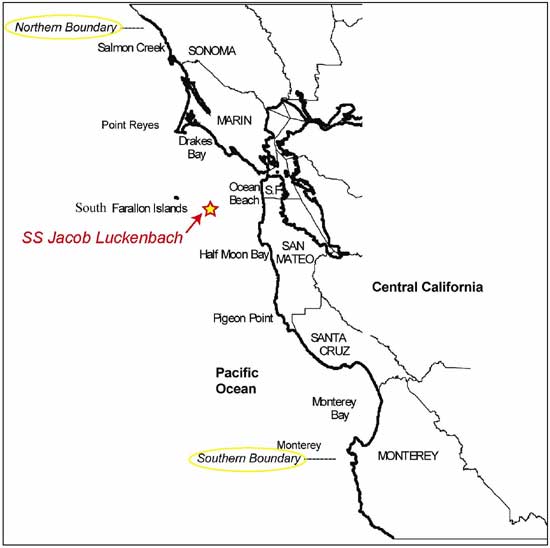
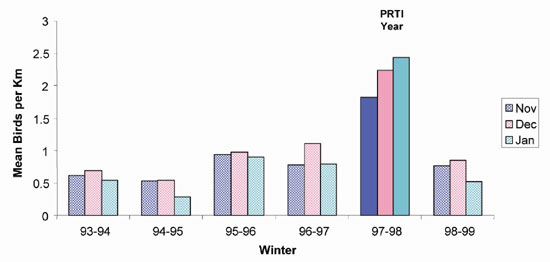
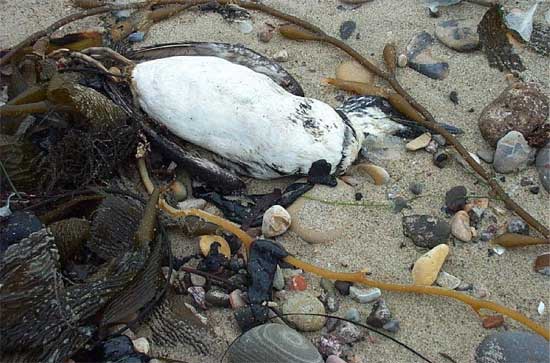
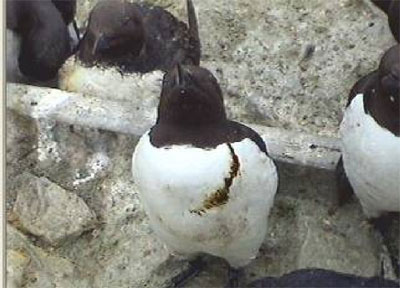
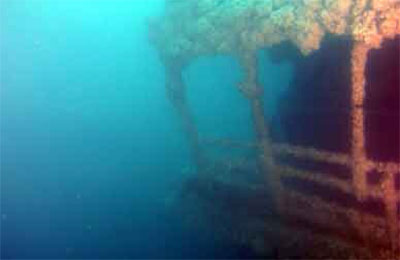
Links to More Information
CA DFW Office of Spill Prevention and Response (OSPR) Luckenbach spill website
OSPR news releases on the Luckenbach
2002 Coastal Conservancy article about the Luckenbach (pp. 14-18 of PDF)
